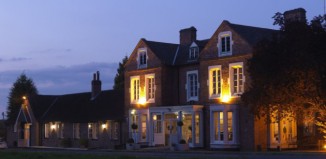Creswell Crags, Nottinghamshire
Birdsong and the crunch of the pathway is the only sound as we follow the woodland trail into the heart of Creswell Crags, the county’s unusual magnesian limestone gorge. Straddling the Nottinghamshire-Derbyshire border, the ravine developed 260 million years ago when the Earth reared and bucked, straining and shelving as its minerals were brought to the surface in a new landscape of valleys, gorges and caves, further sculpted by a network of fast-flowing rivers.
In its entirety this unique geological structure runs from Nottinghamshire to County Durham in the North East, but it is Creswell Crags that holds the most fascinating secrets on the edge of this precious landscape.
Recognised by Natural England as a Site of Special Scientific Interest, Creswell Crags is also an English Heritage Scheduled Ancient Monument owing to its extraordinary geology. “It also has its own eco-system, and is home to rare plants such as yellow-wort and a host of wildlife such as water voles,” explains learning officer and communications manager, Hannah Boddy. “We’re thrilled to be placed on the World Heritage Site UK Tentative List, and have only to meet certain criteria to win the title in the near future.”
At the Crags basin, a pretty lake stretches away for a mile in a narrow strip, bordered on each side by wooded cliffs. Visitors can follow the circular path, from which an assortment of 24 caves and fissures lie hidden, including Mother Grundy’s Parlour, Robin Hood Cave, Pin Hole, Church Hole and Boat House Cave. Some are small recesses in the cliff-face; others run deeper underground, only accessible to the most tenacious pot-holer.
In prehistoric times Creswell Crags was the most northerly accessible point in the world; beyond it lay an impassable glacier. It is thought that Early Man was enticed here as he pursued migrating reindeer herds, upon which he relied so heavily for food, clothing, even tools. Tribes would have walked to Britain from modern-day Europe, which in those days was all one land mass.
“The gorge was used by Neanderthals intermittently around 60,000 years ago,” says Hannah. “Twenty-eight thousand years ago homosapiens arrived and between 15 and 12,000 years ago all the exciting things that we know about began to happen. It’s when Britain’s only known Ice Age rock art was created here, and when other significant finds have been dated.”
Church Hole on the far left bank offered the greatest insights. Stone tools and animal remains discovered inside illustrate the use of the caves as shelters and places to hide, eat and store life’s necessities between 50,000 and 10,000 years ago. Best of all is the evidence of Early Man’s fascination with the world around him, as the primitive drawings etched into the rock display. These remarkably preserved sketches indicate fertile lands, where animals such as stag, bison, birds and horses roamed.
Creswell Crags’ Ice Age history came to light in Victorian times, but archaeology methods of the time were crude by modern standards and much was lost as trophy hunters blasted through the rock-face with dynamite, destroying countless precious items in the quest for ancient bounty. “The first discovery was a mammoth bone, found by a local quarryman,” explains Hannah. “The find inspired national interest in the site.”
Ten years ago the spotlight returned as a team of archaeologists set out to challenge the idea that no Ice Age Palaeolithic rock art existed in Britain, of the type seen in France, Germany and Spain. The team believed that the artistic expression found in European caves must be in the UK too, homosapiens being creatures of habit regardless of their nomadic lifestyle. “Of all the sites explored, this was the only one with figurative rock art,” says Hannah. “It pretty much re-wrote the history books.”
Public tours lead the way into two main caverns. Robin Hood Cave is the largest, where visitors are introduced to the nature of human life in the gorge. On the opposite bank inside Church Hole, guides point out the rock art by torchlight. It is clear to see how the artists followed the natural contours of the stone to form their subjects; and also to see how some of their handiwork has been enthusiastically altered by far more recent hand. Shining a light on the cave roof Hannah explains: “The outline of this Ice Age red deer has been defaced to look more like a goat standing in long grass, complete with beard! You can see the date 1948 etched nearby, probably the innocent handiwork of a child.” The deer itself, affectionately known to staff as ‘Big Frank’, has been dated to 14,000 years old, and is the oldest example of rock art in Britain.
Much research is still to be undertaken and questions persist about the nature of the drawings. Some answers can be found at the new visitor centre, where a museum consolidates the wonders of the gorge through items such as the Ice Age sewing kit, featuring delicate bone needles.
In contrast to this epic history is a very modern approach to the visitor experience. “An app is in the making which will allow visitors to explore the caves on their mobile device,” says Hannah. “It’s an exciting time for Creswell Crags. With the prospect of World Heritage Site status we can’t wait to inspire millions of new visitors.”





